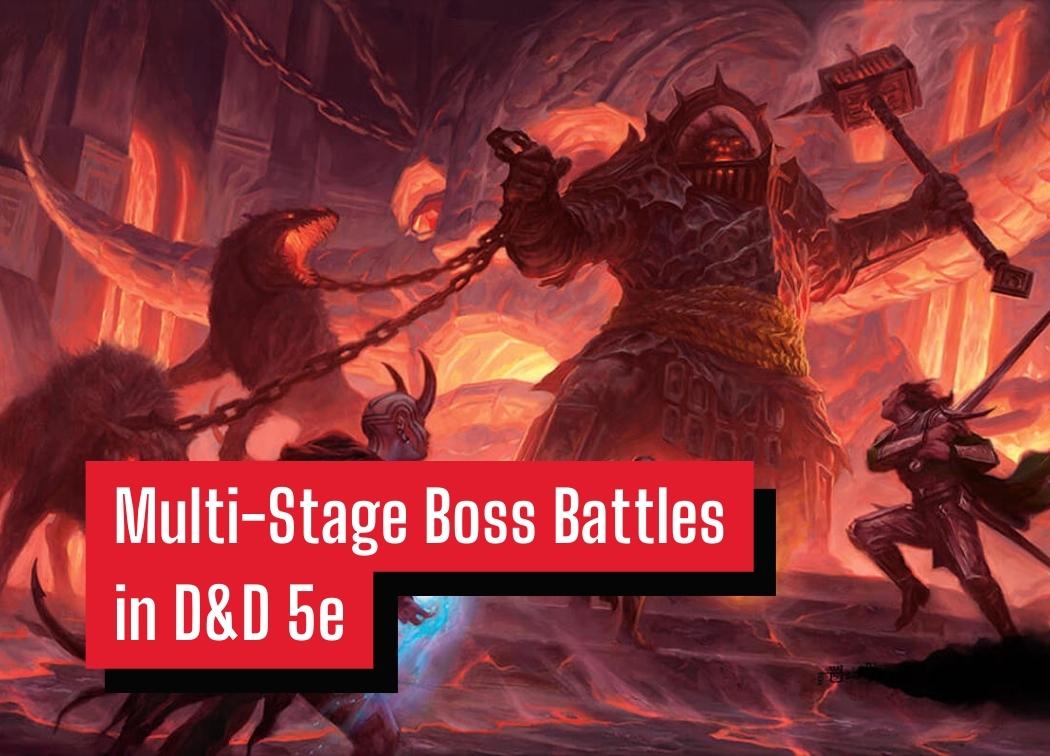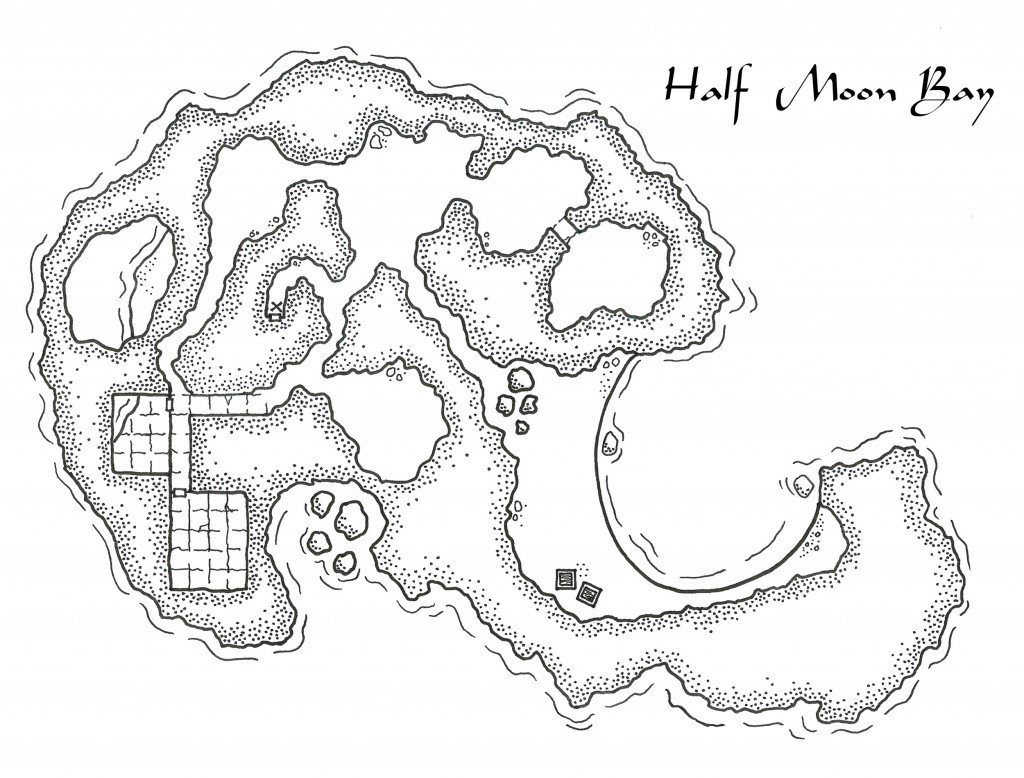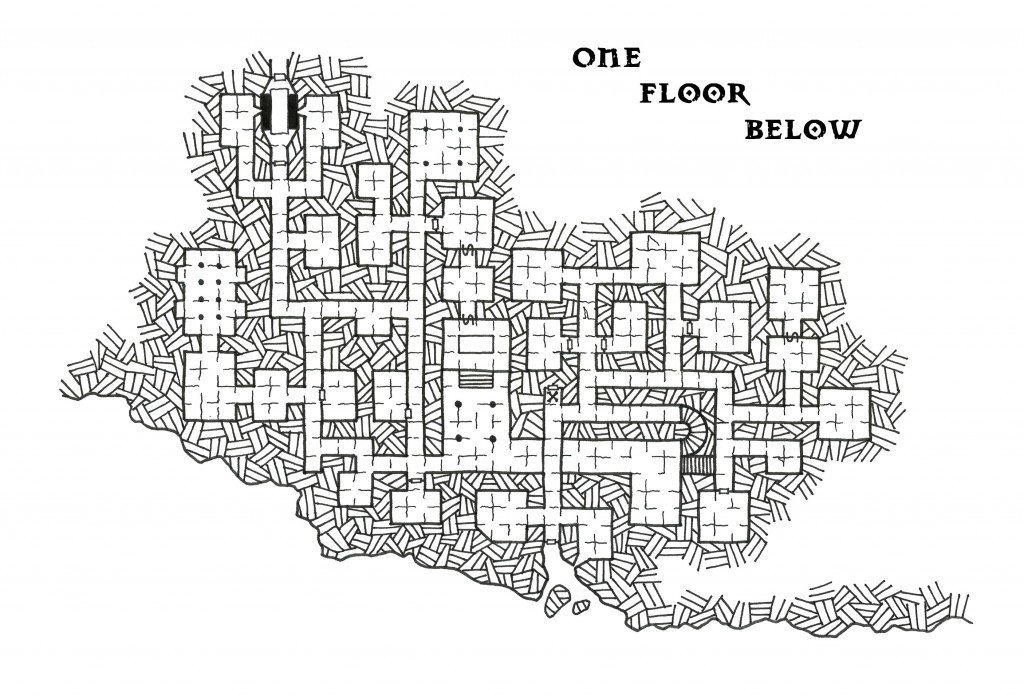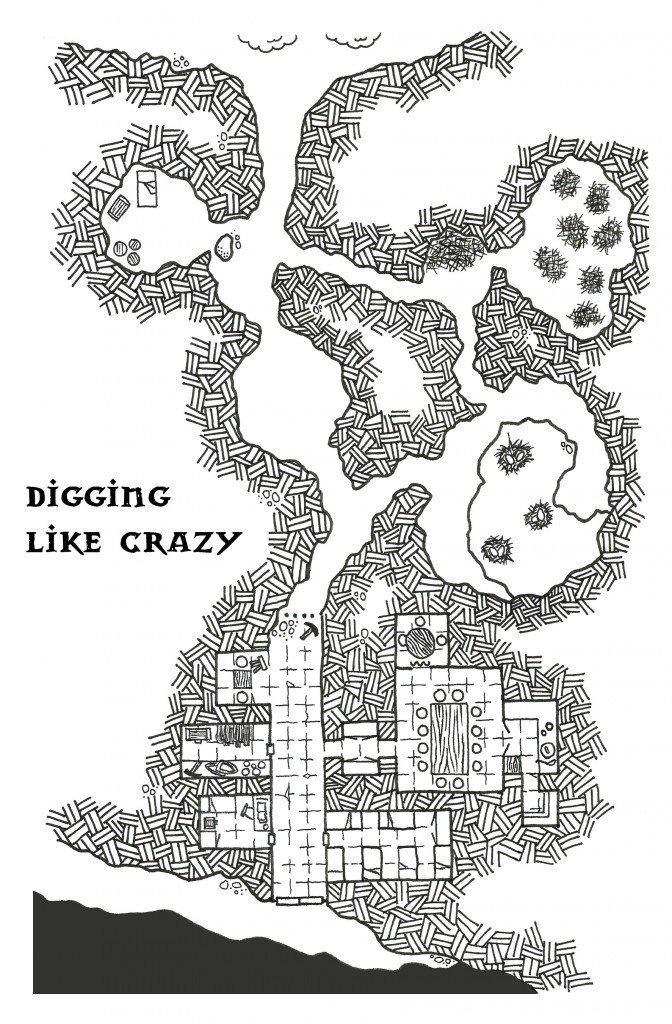Multi-Stage Boss Battles in D&D 5e

Persona 4 Golden was released on Steam last week and as someone who has never played a Persona game before it’s spectacular. Another great game Hades got a huge content update that I’m looking forward to playing.
But neither of these games are TTRPGs. They’re not even the same genre of video game. What do they have to do with anything?
They both have BOPPING soundtracks!
They both contain Multi-Stage Boss Fights.
In many of the boss fights I’ve encountered throughout these games, bosses have gained new abilities and mechanics to use on the player as the fight progresses. Tactics that I use in one stage of the fight might not work as well once Theseus gets his god damn massive AoE explosion ability or when Shadow Yukiko summons her minion.
I’m a big fan of how these types of boss fights play out. However, I never implemented such a situation in my D&D games until recently. Let’s talk about how we can now do this thanks to the help of a new mechanic and how 4e already did this and we never decided to carry it over into 5e.

What is a Multi-Stage Boss Battle
As the name implies, a multi-stage boss battle is a boss battle that has multiple “parts”. Depending on the game each part is determined either by defeating the boss and having to then fight them a second time after they revive or by dropping the boss to a certain HP threshold.
At the start of each part, the boss will gain new traits, abilities, moves, etc. The player(s) must then overcome both the new and the old mechanics that the boss uses.
These types of fights require quick-thinking and on-the-fly tactical decisions to succeed. A strategy that worked for Stage 1 may not work the same way during Stage 2 or 3 due to the boss’ new mechanics.
In video games, the player has the benefit of learning to succeed. If they fail they can try the fight again and try new strategies until they succeed. In D&D you don’t get that option. If you fail, your character is going to die, or even worse the entire party dies!
The Benefits of Multiple Stages
Ramping up the difficulty throughout the fight is a fun game design practice. You can introduce the creature and their base abilities/moves during stage 1 and then in stage 2 you can build off of those moves and create new challenges and features for the player(s) to tackle.
Multiple stages give you the freedom to pull off some wacky shit while still giving the player(s) a fair shot at the boss.
It’s also another option to combat 5e’s natural action economy imbalance between the party and your boss creature. Even if the party overwhelms the creature in stage 1 due to this imbalance, the creature has another stage to shine.
It’s also easier to balance a multi-stage boss fight since you’re only worrying about a single creature. You can consider it the same as fighting the same creature twice rather than a creature with X minions or two of the same boss creature.
The Bloodied Condition in 4e
I’ve never played 4e for starters. We still played 3.5e while it was out and by the time we were done 5e was already released.
With that being said Bloodied was an interesting mechanic from 4e that didn’t make the jump to 5e. This is a bit of a shame in my opinion because it seems like a great way to add multi-stage boss fights to combat.
Bloodied was a condition that was invoked once a creature or character was at or below half their maximum HP. At its core, it’s an in-universe way to signal to the players that the enemy or one of their allies is in a significant amount of pain. I try to use a similar method of describing a creature’s current HP in my 5e games.
With regards to game mechanics though, Bloodied also invoked the use of (or took away) certain abilities or gave the creature/character new traits to use while bloodied. Creatures and characters also had abilities that could only be used against targets that were currently bloodied.
It’s extra bookkeeping so I understand why it was taken out to make 5e a more streamlined experience. However, it has some great bones for beefing up boss fights by adding what is a “second stage” of the fight.
Adding new abilities, traits, etc. is the essence of a multi-stage boss battle and Bloodied is a great vehicle for signaling to the players that they’ve both entered a new stage and should expect the fight to get more difficult.

In Practice
I tried a hack of Bloodied on the final boss of my most recent D&D campaign where they gained a new trait at half HP which gave them some additional offensive power at the cost of their defenses.
It was like hitting a soft enrage in a WoW raid. The party needed to rush to finish the job while still respecting the mechanics the boss had before they were Bloodied.
This was a great addition to 5e’s mechanics and it’s something that I plan to explore and fine-tune more in the future when we return to a homebrew world. Or well, it was until…
Mythic Traits in 5e
Mythic Traits from the new book Mythic Oddyseys of Theros is 5e’s solution for the Bloodied mechanic from 4e. As well as multi-stage boss fights in general.
Bell of Lost Souls did a rundown on Mythic Traits so check that out for the full scoop. The basics of the mechanic are that once a creature drops to 0 HP they regenerate back to full HP and gain the perks of their Mythic Trait.
This trait could grant the creature several perks such as increased defenses, offenses, and new resistances and immunities. So not only do you have to defeat the creature twice, the second time is even more difficult.
In addition to the trait, the creature is also able to now use their new Legendary Actions called Mythic Actions. These new actions do not replace the creature’s original Legendary Actions, they supplement them. They give you more options to choose from when it’s time to make a Legendary Action.
All in all, I think this new mechanic has great bones. It’s the foundation
Working as Intended?
This mechanic is very similar to how the Bloodied condition works except it requires less math by having the Mythic Trait activate once the creature is at 0 HP. However, relying on regeneration to avoid having to keep track of the creature’s HP threshold is a potentially flawed approach.
My (and others’) reasoning is that if a creature is affected by an effect like Chill Touch they cannot regain their HP, ergo you cannot enter “stage 2” of the fight. Rewarding players for leveraging their spells well is great. However, this feels like an oversight. A spammable Cantrip shouldn’t shut down half a boss fight.
It’s easy enough to handwave this issue and I’m sure with my players they’d be cool with that. But not every DM has the luxury of understanding players.
A Quick and Dirty Solution
One solution to this could’ve been to double a mythic creature’s HP and tag a “Mythic Trait Activation” threshold next to their HP. A creature starting at 800 HP is pretty much the same thing as a creature starting at 400 and gaining 400 halfway through the fight, right?
Once they’re at that HP or lower they’ll gain the use of their Mythic Trait and Mythic Actions. This ensures that Chill Touch won’t thwart your cool boss fight while not forcing you to bullshit your way around your players’ spell lists.
This solution ensures that the trait will always activate and streamlines the activation for the DM. The DM doesn’t have to calculate anything other than keep track of the creature’s current HP. Which they already do.

Implementation
We can dissect mechanics all day, but what matters is how we can implement a multi-stage boss battle. I feel it’s best to use the appropriate tools for the edition that you’re running. In this case, I’ll most likely wind up using Mythic Traits as the foundation for this.
From what we know about Mythic Traits so far we’ll need to include two things:
- Mythic Actions
- 2-3 powerful, new Legendary Actions that pack a punch.
- While they don’t technically replace Legendary Actions it doesn’t feel like making them more powerful than the creature’s Legendary Actions is considered bad form. Go wild!
- Mythic Trait that includes one of the following:
- Enhanced defenses such as higher AC, condition immunities, damage resistances/immunities, saving throw proficiencies, etc.
- Enhanced offenses such as additional damage, higher attack stat, etc.
Both of these items aren’t all that complex to homebrew. If you utilize the examples and mechanics that have been laid out for us already you should have no issue homebrewing any boss monster into a Mythic-level terror.
Use Descriptive Language
When a boss enters “stage X” of a fight in a video game the mechanical changes are accompanied by a change of appearance and often a change in music to set the scene. While incorporating music into your TTRPGs is an awesome idea you still must describe the boss’ transformation since we cannot rely on visuals.
Well, I guess you could also swap out the token or miniature you’re using too…
Regardless, as the DM it’s your job to describe the situation to the players so that they can make informed decisions for their characters. There’s nothing worse than flubbing a description and causing mass confusion for everyone at the table. Trust me, I’ve done it many times.
When the boss fight enters stage 2, tell the party about how this happens. Here’s just a quick example:
The fighter lands the finishing blow on the hydra. It falls to the ground gushing blood from its severed necks. However, before you can catch your breath you notice the hydra’s body convulsing and countless new heads burst from the hydra’s wounds. The newly reformed hydra bursts into a rage and you see green liquid dripping from each head’s tongue.
In this description, I’ve told the party that:
- The fight is not over.
- The hydra is pissed, meaning it probably has an offensive bonus of some kind.
- The hydra may be poisonous or has gained some other property it didn’t have previously.
While what comes next is still a surprise, the players know that shit has hit the fan and they’re going to have to overcome additional obstacles in stage 2 of the fight.
Conclusions
Multi-Stage boss battles have been a staple in various genres of video games for years. They offer a convenient way for the designer to push the limits of the boss fight while keeping things fair. Mechanics are added as the fight progresses, giving the player time to get comfortable and learn each mechanic before more are added.
They’re a great tool that we can carry over to D&D and other TTRPGs. However, the way these types of games are designed, the players don’t get the benefit of retrying a fight over and over until they win. You either win or you die.
While this makes balancing a bit more nerve-wracking, I believe that they’re a useful feature for should be the climactic final encounter of a dungeon or adventure. Challenge your players and make them feel like they’ve earned a great victory after they slay the big bad they’ve been chasing.
Go wild. Design fights that are both fair, but make the party earn that win!

This is a great idea and I have a good notion on how to use this in an upcoming bbeg battle.
The only question I have is this: I know my players and there’s a very good chance that after I describe the transformation into the second phase they’d automatically think “oh man this is going to keep happening forever. We can’t ever kill this thing. Let’s retreat”.
How do I describe the fact that this is “phase 2” but the boss IS defeatable, but they’ll have to keep fighting. But also without letting them know for sure that’s the situation?
Maybe describe the transformation and add a line like “it looks angry and definitely weaker than it did before. Closer to death, but also more dangerous”? Something like that?
That’s a great question. I haven’t run into this issue myself yet, but my group is also pretty familiar with mutli-stage boss fights in various video games so that might explain why.
I think your idea is the best way to go about it. The party needs to know that the creature is still wounded, but also that its “second wind” of sorts makes the creature much more powerful than it just was. The party should look at it like it’s a wounded animal making a desperate last stand with its back against the wall.